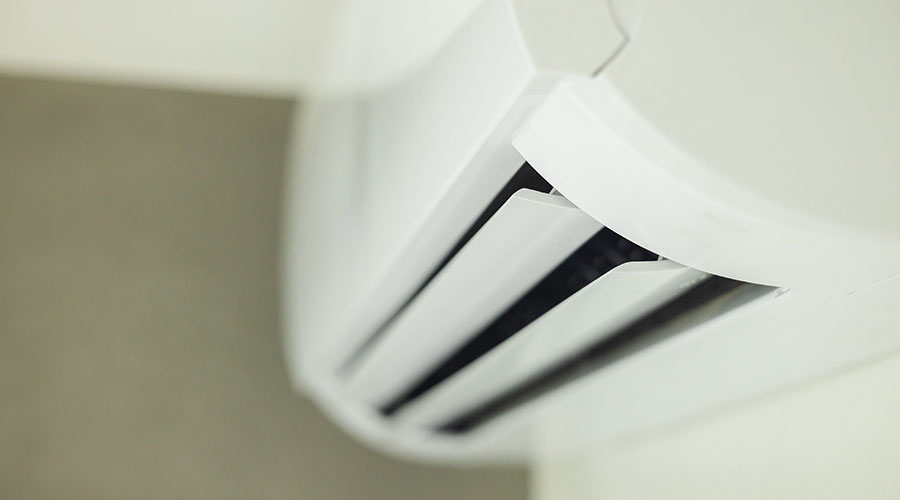Insulation: Overlooked Opportunities
Using the right amount of insulation in a building can save energy and increase occupant comfort. So why are so many buildings not properly insulated?
While much media attention has focused on rising fuel costs at the gas pump, higher energy prices have an even larger impact when it comes to heating and cooling commercial office buildings. Energy costs account for about 30 percent of the operating budget of most commercial buildings, according to BOMA International. “Buildings are energy hogs,” says Gale Tedhams, products and programs manager with Owens Corning.
Insulation helps reduce the amount of energy consumed by buildings, as well as the amount of carbon emissions they generate. Collectively, the insulation currently installed in buildings in the United States saves 15 percent of the combined national energy use, according to a 1996 study, “Green and Competitive,” by Energy Conservation Inc.
Most commercial buildings would benefit from higher levels of insulation, say experts. Currently, most facilities in the U.S. are insulated only to code. “That’s just a minimum,” says Mike Lynam, director of strategic marketing and communications, Knauf Insulation.
Insulation and Energy
In some cases, buildings aren’t even insulated to code, says Bob Dehne, architectural services manager, Owens Corning. This isn’t necessarily by design, he says, but because of lack of awareness on the part of some architects and building code officials. According to Reed Larson, senior technical services manager, Johns Manville, if all buildings were insulated to meet ASHRAE Standard 90.1, which is the basis for most city and state codes, the country would save 260 trillion BTUs of energy per year.
Several factors contribute to the amount of insulation in many commercial buildings being less than it should be. For starters, when a facility is under construction, the building owner and designer can only guess at what energy prices will be decades down the road, says Charles Cottrell, vice president of technical services with the North American Insulation Manufacturers Association (NAIMA). Based on estimates, they’ll decide what level of insulation will provide the best return.
The result is that many buildings have been built with overly optimistic projections of energy costs and are under-insulated, Cottrell says. A larger investment in insulation would be paying off now in lower energy bills.
The gap between the capital and operating budgets also helps account for lack of adequate insulation. “With new buildings, there are a lot of competing considerations for construction dollars,” says Larson. “The benefits of energy efficiency measures, on the other hand, usually accrue to the operating budget, rather than the initial capital budget.”
Once a building is open and occupied, increasing the amount of insulation gets pricey. That’s because adding insulation means tearing down drywall and ceilings. Typically, this occurs only during a major renovation. “You often have to live with the initial insulation design,” says Larson.
Given that there is a set amount of floor area in an existing building, using even a few inches along the perimeter to accommodate more insulation eats into the space available, says Lucas Hamilton, manager of building sciences support, CertainTeed Corp.
Many commercial buildings are designed with a large amount of glass, which makes it even more difficult to ensure that the appropriate level of insulation is installed. “There’s not a lot of wall area to work with,” says Hamilton. That means the opaque areas that are available for insulating need more than the minimum required by code.
Finally, in many multitenant buildings, the tenants, rather than the owner, pay ongoing utility bills, says Bob Gardner, technical services manager, Knauf Insulation. While it’s important to ensure that the building’s occupancy charges remain competitive, the owner usually doesn’t need to worry about covering all the costs.
Measuring Up
Insulation’s performance is measured with R-value, the resistance to the flow of heat through the material. “The higher the R-value, the more insulating the material is,” says Hamilton.
The calculation closely, although not exactly, follows a straight line, says Lynam. Insulation with an R-value of 10 will lose about half as much heat as insulation with an R-value of 5.
Currently, code in many areas of the country requires an R-value of at least 13 in walls. Some southern states and municipalities approve insulation with an R-value of 11.
The U-factor, another measure of energy use, describes the energy performance of the entire building, including the framing, drywall and exterior, says Larson.
The U-factor, which is the inverse of R-value, measures the rate of heat transmittance. It is calculated as the number of BTUs per hour, per square foot, per degree Fahrenheit, that are being consumed, Cottrell says. With U-factor, the lower the number, the better.
Finally, K-factor is used to measure the performance of mechanical insulation, says Gardner. This measures thermal conductivity, or the amount of heat that flows through an area. Again, the lower the number, the better.
Insulation and Installation
Insulation can be distinguished both by the materials used and by the way it’s installed.
Fiber glass insulation is made of melted sand, minerals and recycled glass. Many brands of fiber glass consist of at least 30 percent recycled material. The most common form of fiber glass is the low-density batts or blankets that are used in walls and ceilings, says Larson.
Fiber glass also comes in semi-rigid boards. These are made for areas within the building that lack consistent framing, as they can be attached to the exterior wall with pins. Loose-fill fiber glass is installed with a blowing machine, and typically is used in attics and ceilings. Spray-on insulation is made with a tacky adhesive that allows it to fill in nooks and crannies.
Additional insulating materials include slag wool and rock wool. Slag wool contains between 70 and 85 percent blast furnace slag, a waste material. Rock wool is made of crushed basaltic rock and up to 30 percent blast furnace slag. It typically has a slightly higher melting temperature than fiber glass insulation, says Larson.
No matter the composition of the insulation, proper installation is key. “Installation has a big bearing on how the insulation will perform,” says Larson.
The proper installation of insulation also is key to reducing the potential for mold. By itself, fiber glass is not a food source for mold. In fact, by helping to maintain an even building temperature, insulation helps reduce condensation which can lead to mold, says Larson.
Proper installation can reduce the chance that mold will find its way around the building envelope and near the insulation. That means using building techniques that keep dirt from getting into building cavities, while also allowing moisture to get out.
Additional Benefits
Insulation can do more than save energy. Another benefit is tenant comfort. Having the proper level of insulation within a building can moderate indoor temperatures, preventing extremes of both hot and cold, says Larson.
One overlooked aspect of comfort is acoustics, says Hamilton. “People don’t pick up on the importance of insulation in providing sound control.”
That can be critical in some offices. Doctors and lawyers, for instance, have a legal obligation to keep their clients’ information private. “Insulation can keep noise from transferring from one office to another,” says Cottrell.
In addition, properly insulating a building can mean that smaller heating and cooling equipment will suffice. “You can downsize the heating and cooling equipment, because you need less horsepower to heat and cool the building,” Larson says.
Another important quality of insulation is its ability to resist fire. “By filling the cavities in walls and ceilings, you can slow the movement of fire and smoke,” Larson says. Some building codes require the use of fiber glass insulation in certain areas to help keep flames contained.
Of all the benefits of insulation, of course, energy savings is at the top of the list. Building owners can take any number of steps to boost energy efficiency, but increasing insulation while a building is under construction often is the least expensive, says Dehne. “The most cost-effective thing you can do to reduce energy costs is to insulate,” he says.
The Energy Policy Act: Insulation incentives
The economic benefits of insulation were given a boost by the Energy Policy Act of 2005 (EPAct). EPAct offers a tax deduction of up to $1.80 per square foot for reducing energy consumption by 50 percent over ASHRAE 90.1, the 2001 standard.
“It’s a high bar, but it can reached,” says Lucas Hamilton, manager of building sciences support, CertainTeed Corp. The deductions currently apply to commercial buildings constructed during 2006 and 2007, and also can apply to building upgrades.
At this point, many in the design and construction fields are still figuring out how best to qualify for the tax deduction, as the IRS just issued rules governing the calculations this spring, says Charles Cottrell, vice president of technical services with the North American Insulation Manufacturers Association (NAIMA).
|
About NAIMA
The North American Insulation Manufacturers Association (NAIMA) is a trade group made up of manufacturers of fiber glass and rock and slag wool insulation products.
NAIMA provides services for its members and others in the construction industry, including providing and maintaining research on the health, safety and economic benefits of insulation; sponsoring and developing insulation training initiatives at schools and colleges; working closely with governmental agencies as they develop policies that affect those in the insulation business; and keeping its members apprised of national and international energy policy issues.
Through its Web site and downloadable literature, NAIMA also offers more general information on such topics as energy efficiency, the health and environmental attributes of insulation, and the proper installation of insulation.
In addition, NAIMA is a strong proponent and advocate of energy efficiency and sustainable development through the use of fiberglass, rock wool and slag wool insulation products. The organization’s leaders work with the leadership of other groups around the globe to develop policies that will further these goals.
More information about NAIMA, which is headquartered in Alexandria, Va., can be found online.
|
Related Topics:











